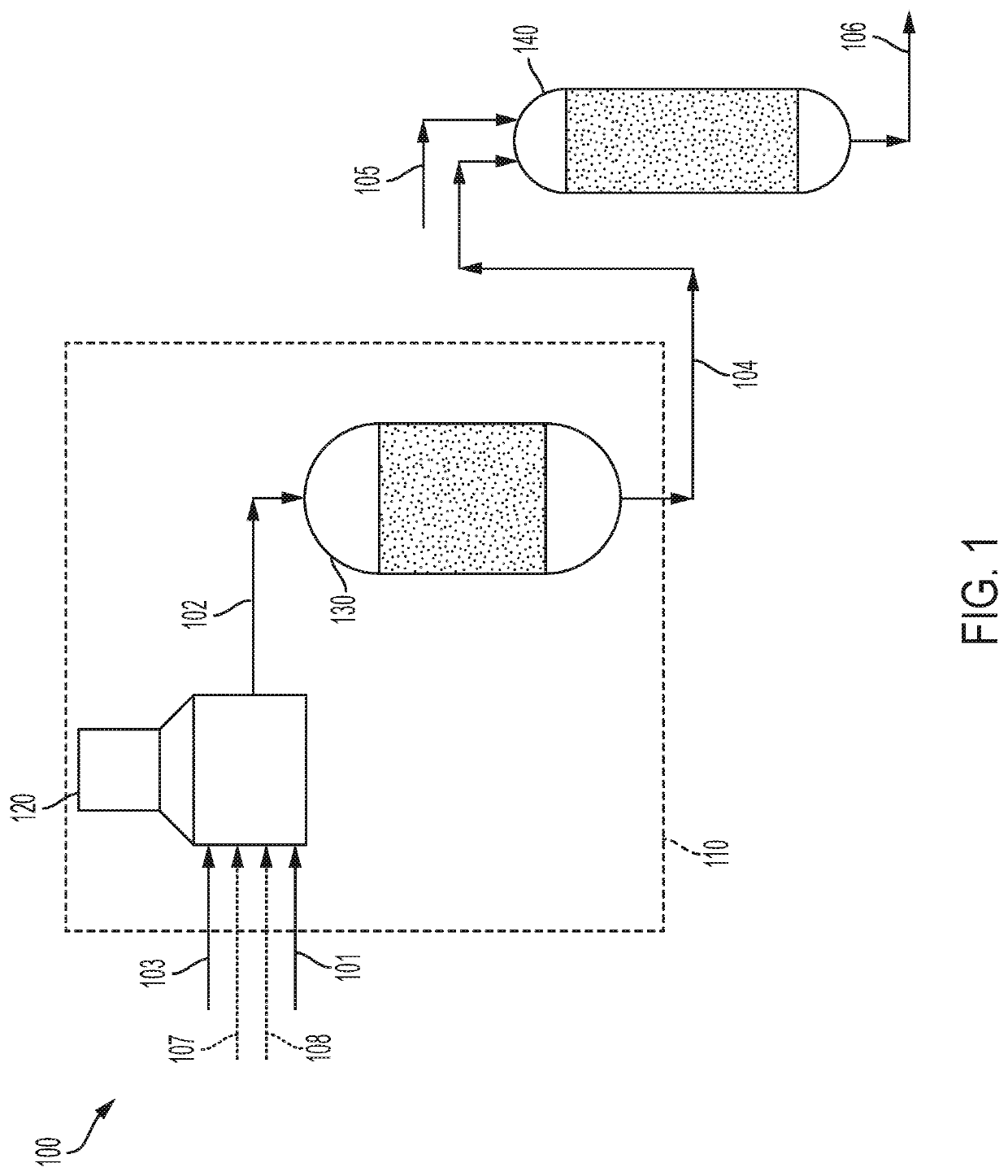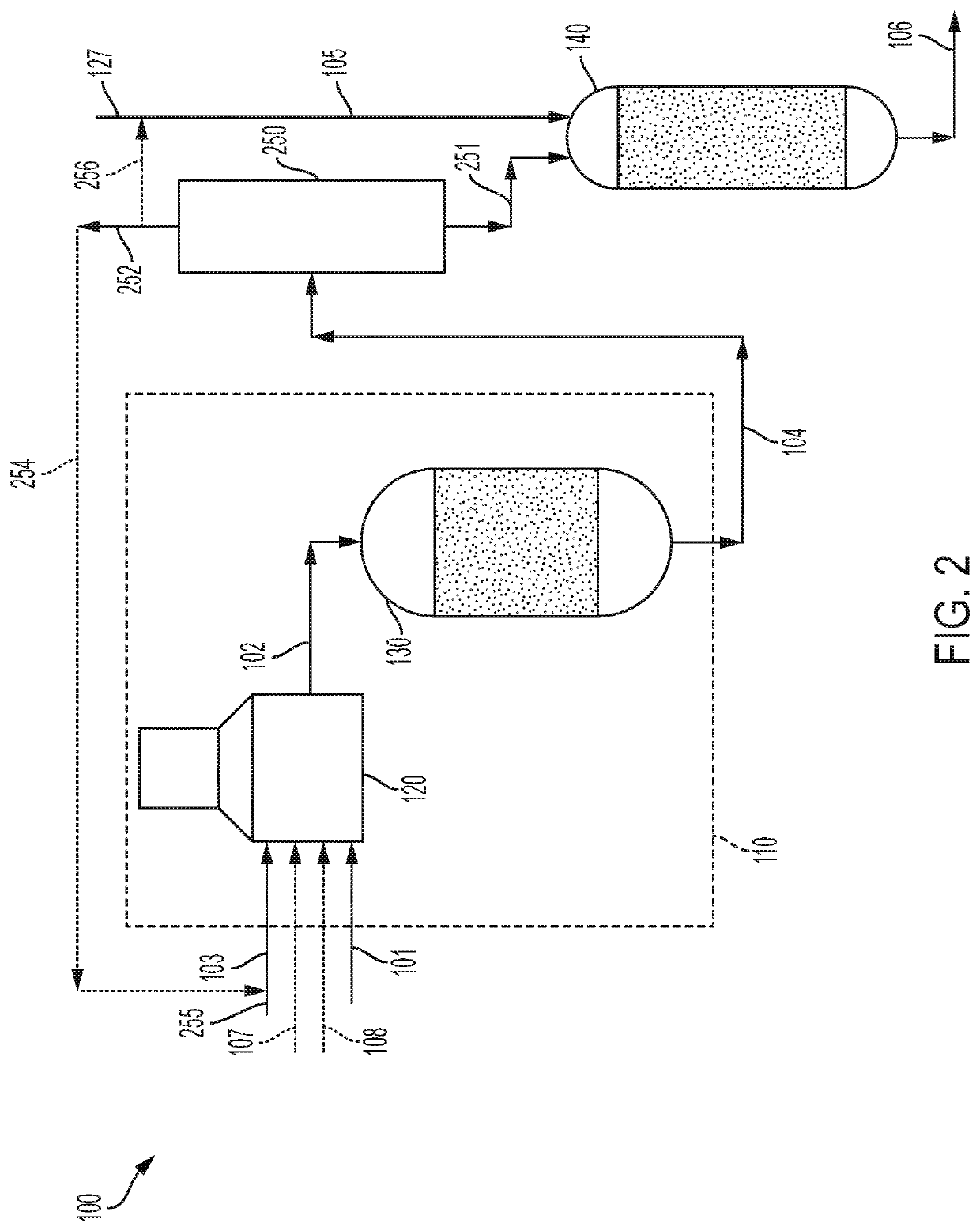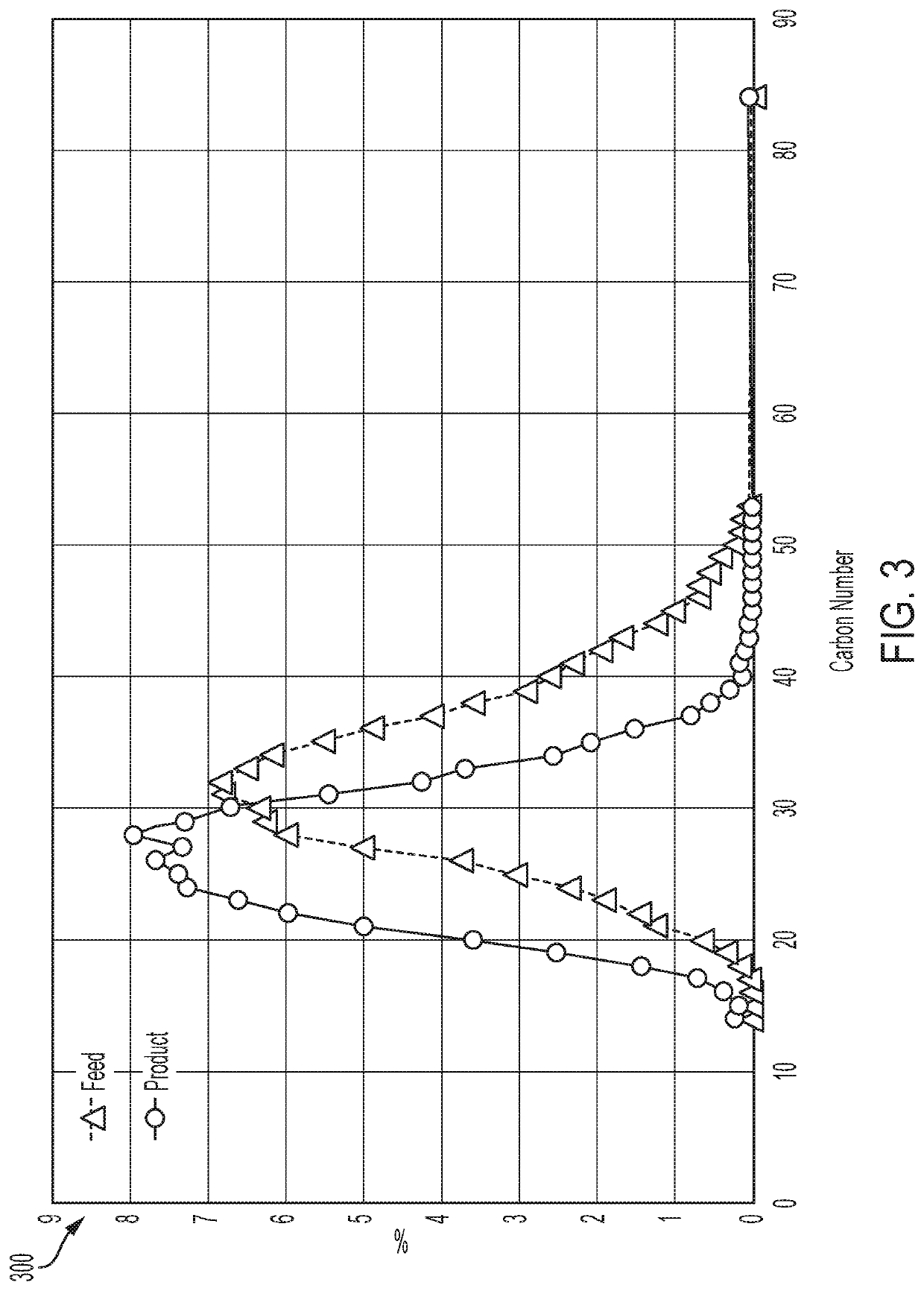Thermal hydrodealkylation of hydrocracking feedstock to mitigate HPNA formation
- Summary
- Abstract
- Description
- Claims
- Application Information
AI Technical Summary
Benefits of technology
Problems solved by technology
Method used
Image
Examples
example 1
[0077]In Example 1, a hydrocarbon feed was processed in a hydrodealkylation unit to reduce the formation of heavy polynuclear aromatic compounds during downstream hydrocracking. The hydrocarbon feed had the properties shown in Table 2.
[0078]
TABLE 2PropertyUnitValueDensityg / mL0.916Sulfurwt. %2.35Nitrogenppmw798MCRwt. %1.00Hydrogenwt. %12.35Simulated Distillation 0 wt. %° C.29710 wt. %° C.38330 wt. %° C.42650 wt. %° C.45670 wt. %° C.48790 wt. %° C.53395 wt. %° C.55395 wt. %° C.597
[0079]The hydrocarbon feed was processed in a hydrodealkylation reactor at 550° C., 10 MPa of hydrogen partial pressure, and a residence time of 30 seconds. The hydrogen to hydrocarbon feed ratio was 1,000 standard liters of hydrogen per liter of hydrocarbon feed. The hydrocarbon feed was processed in the hydrodealkylation unit in the absence of a hydrodealkylation catalyst.
[0080]The fractional compositions of the hydrocarbon feed and the hydrodearylation effluent are shown in Table 3.
[0081]
TABLE 3Hydrocarbon...
PUM
 Login to View More
Login to View More Abstract
Description
Claims
Application Information
 Login to View More
Login to View More - Generate Ideas
- Intellectual Property
- Life Sciences
- Materials
- Tech Scout
- Unparalleled Data Quality
- Higher Quality Content
- 60% Fewer Hallucinations
Browse by: Latest US Patents, China's latest patents, Technical Efficacy Thesaurus, Application Domain, Technology Topic, Popular Technical Reports.
© 2025 PatSnap. All rights reserved.Legal|Privacy policy|Modern Slavery Act Transparency Statement|Sitemap|About US| Contact US: help@patsnap.com



